The largest British soldierfly species are to be found in the type genus Stratiomys which is represented by four species in Britain, three of which are characterised by brilliant yellow patches or stripes on their black abdomens.
One of those, the clubbed general soldierfly S. chamaeleon, has always been regarded as very rare and is currently known only from three small areas of the UK. This has been chosen as our fly of the month for July which happens to be about the centre of its known adult flight period.
The species of the genus Stratiomys all have Characteristic antennae with long first and third segments separated by a short second segment. They also have two spines, one projecting from each side of the rear edge of the scutellum.
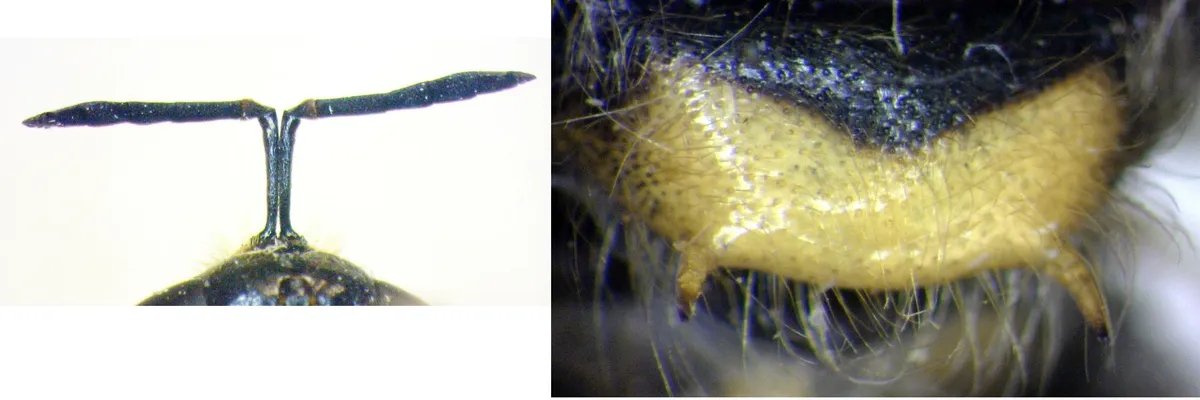
These spines have played a significant role in the namimg of the family and it's primary genus - see the historical notes below.
The Ecology and Habitat of Stratiomys chamaeleon
The larvae of Stratiomys species, which are elongate and tapered with a long rear segment are always associated with wetlands. Those of S. chamaeleon are found typically in fens associated with springs, seepages and streams, sometimes with tufa deposits or they develop in wet mud, or shallow water in sheltered pools.
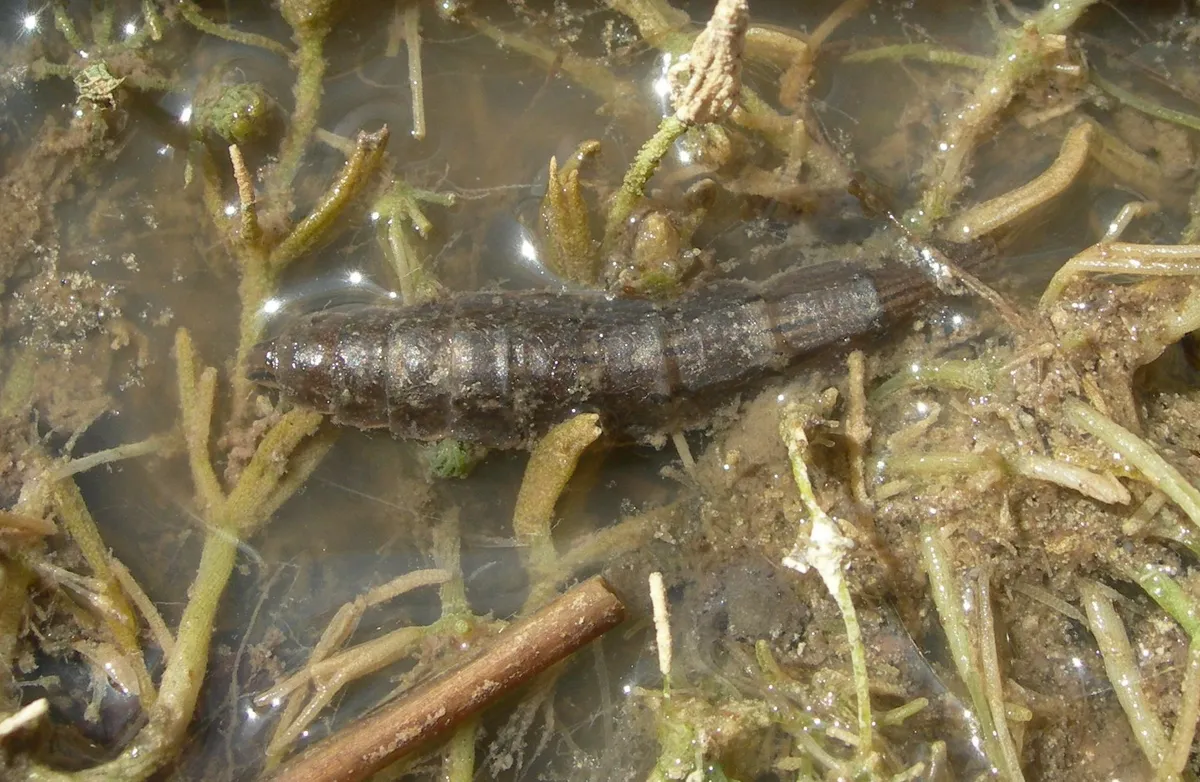
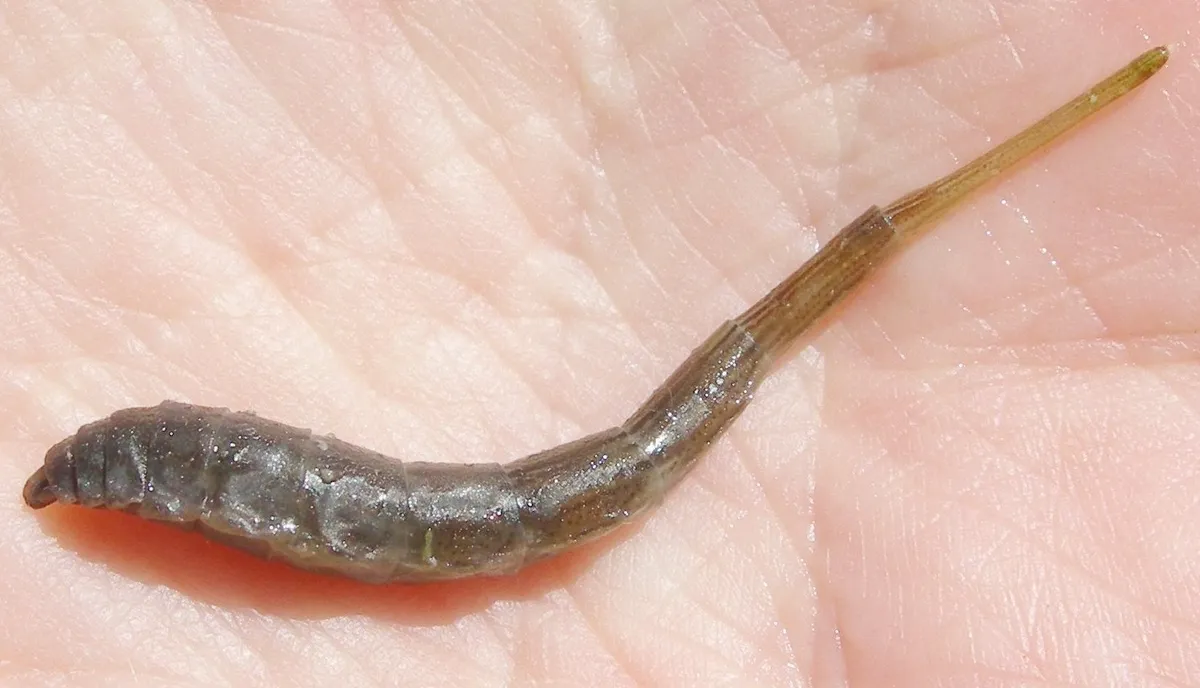
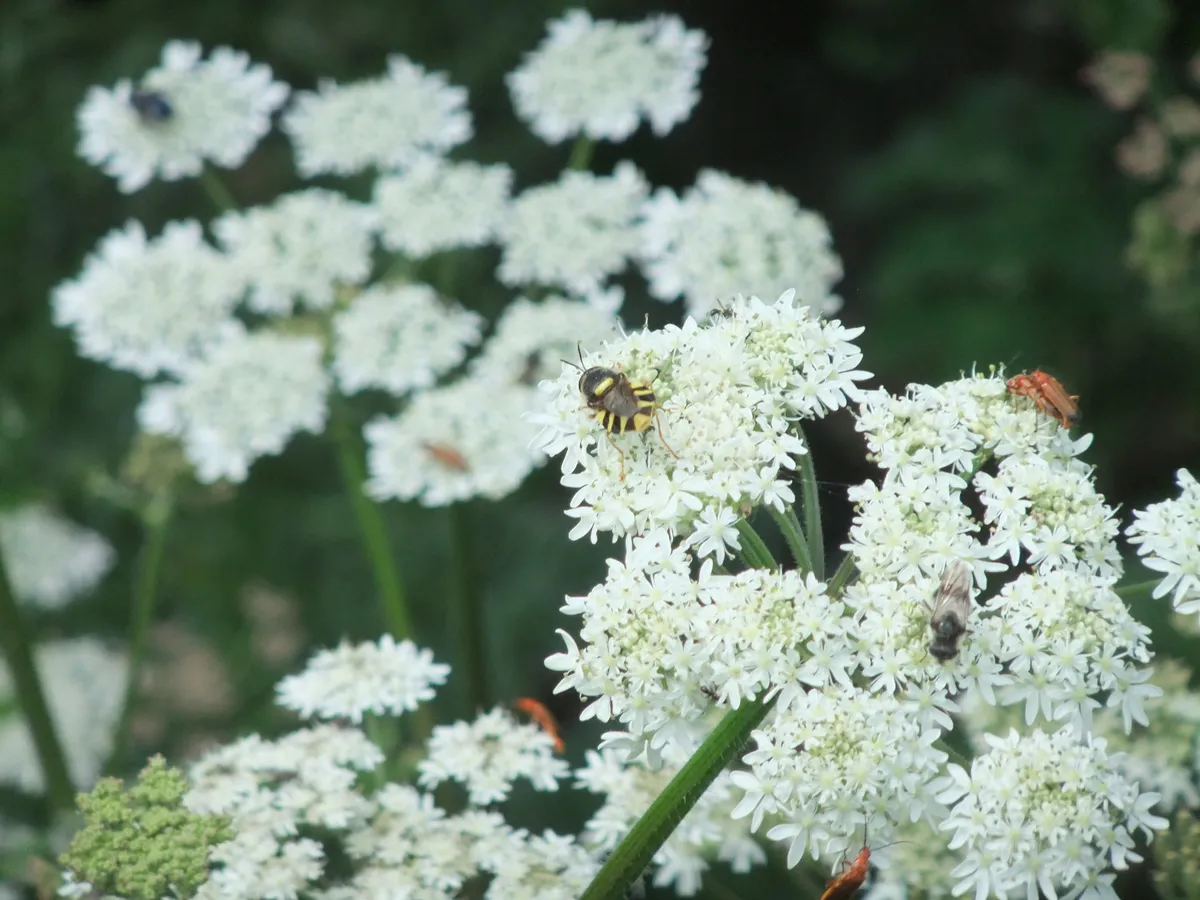
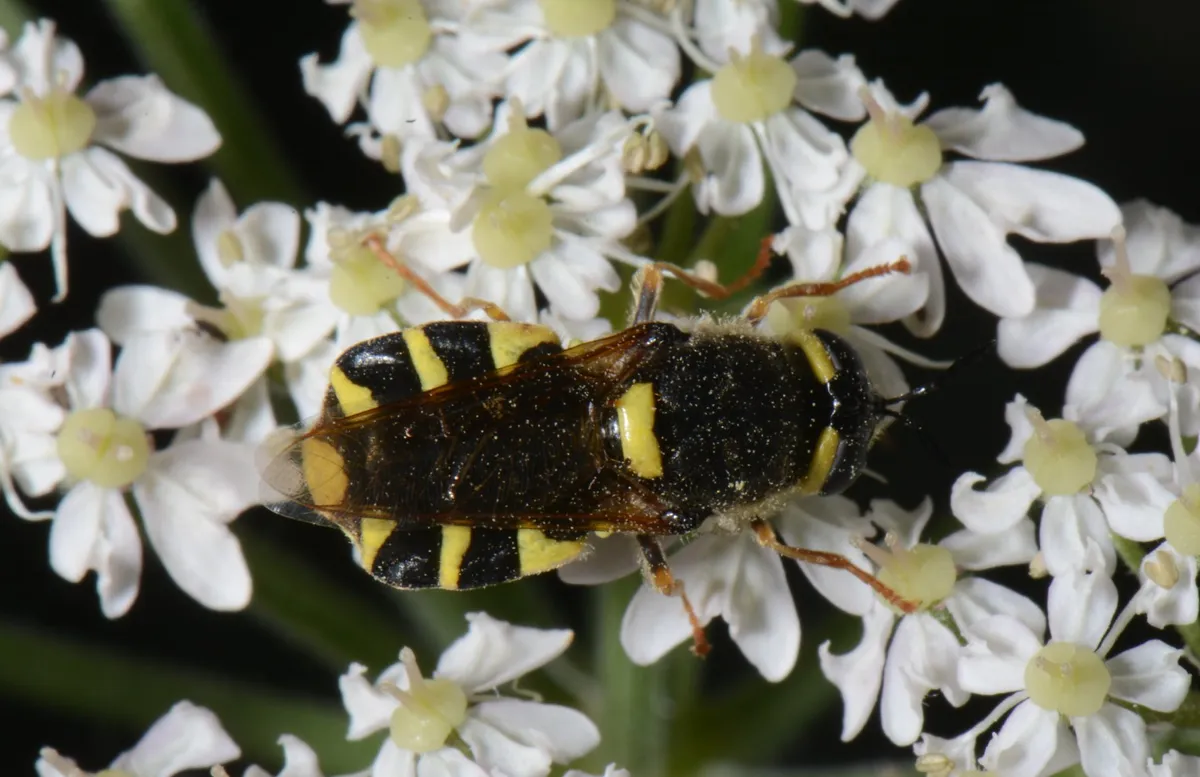
The adults of all species are almost always found feeding on necter at flowers, especially umbels and often at a significant distance (200 - 300m) from their wet larval habitat.
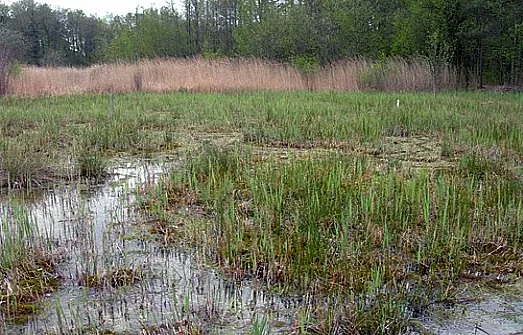
History of the names of our Stratiomys chamaeleon and its close relatives in Britain
The procedure for formally describing and naming animal species with a binomial Latin name (derived from Latin and/or ancient Greek) was established with the publication of the 10th edition of the book Systema Naturae written by Swedish naturalist Carolus Linnaeus in 1758. In that book he named and listed every species of animal he knew of at the time. That included the first 203 species of flies ever named out of the roughly 160,000 species currently described!
Our fly of the month was one of those very first species of fly described in 1758. It was given the name Musca chamaeleon where “Musca” is the Latin word for fly and "chamaeleon" is derived from the Greek words for “ground” and “lion”. The overall English equivalent of the name was “ground-lion fly”
In 1762 a Frenchman named Etienne Geoffroy published a book discussing the insects in the area of Paris in which he described his perception of the importance of the spines on the scutellum of Musca chamaeleon as weapons. He gave it the French name of “mouche-armée” (literally army-fly) and proposed that a new genus should be erected for it.
Geoffroy wrote that after discussing his French name with other entomologists they agreed to create a Latin name by translating the French into a Latin form using Greek words and so the name Stratiomys was created. Unfortunately, it appears that the Greek words used were “Stratiotes” (soldier) and “mys” (mouse) instead of “myia” (fly).
The name Stratiomys chamaeleon was published.The error was quickly noticed and over the subsequent years attempts were made to amend the genus name to Stratiomyia but always failed because the rules forbid changing of names once they have been validly published. The last such attempt was dismissed in1957 (195 years later) by the International Commission on Zoological Nomenclature (ICZN) who have been established to mediate in such cases.
The detail of the genus name fortunately did not impact on the derived scientific family name Stratiomyidae. Soldierflies (an English version of Geoffroy’s French name “mouche-armée”) has been used regularly as a collective English name for the whole family in British and American literature for a long time.
In 1763 the Italian Giovani Scopoli described a new genus and species Hirtea longicornis, but Hirtea was shown to be a synonym of Stratiomys and the species became named Stratiomys longicornis.
In 1776 the British entomologist Moses Harris, apparently unaware of the split of the genus Stratiomys from Musca, described another new species under the name Musca singularior. His species was later reassigned and became Stratiomys singularior.
In 1822 Frenchman Johann Meigen described the last of our four British Stratiomys species directly as Stratiomys potamida and it has never been chnged since .
In 2001, with the publication of the first edition of the book British Soldierflies and Their Allies, English language names were created for every species included in the book. All those created for Stratiomyidae were based on military ranks e.g.“Clubbed General” in the case of our fly of the month which has club-shaped yellow markings on its abdomen.
The identification and distinction of the adult British species of Stratiomys
All four species can be recognised by the nature of patterns of marks on the top of the abdomen. The problem is that when the flies are at rest their wings are usually closed over the midline of the abdomen and largely or partially obscure these patterns making it difficult to distinguish them from photographs. Nevertheless one learns to separate the species with practice.
The pictures of preserved specimens below illustrate the differences between the species and sexes.
Clubbed general, Stratiomys chamaeleon
- ID notes: Tergite 3 with broad yellow markings sharply truncated at inner ends
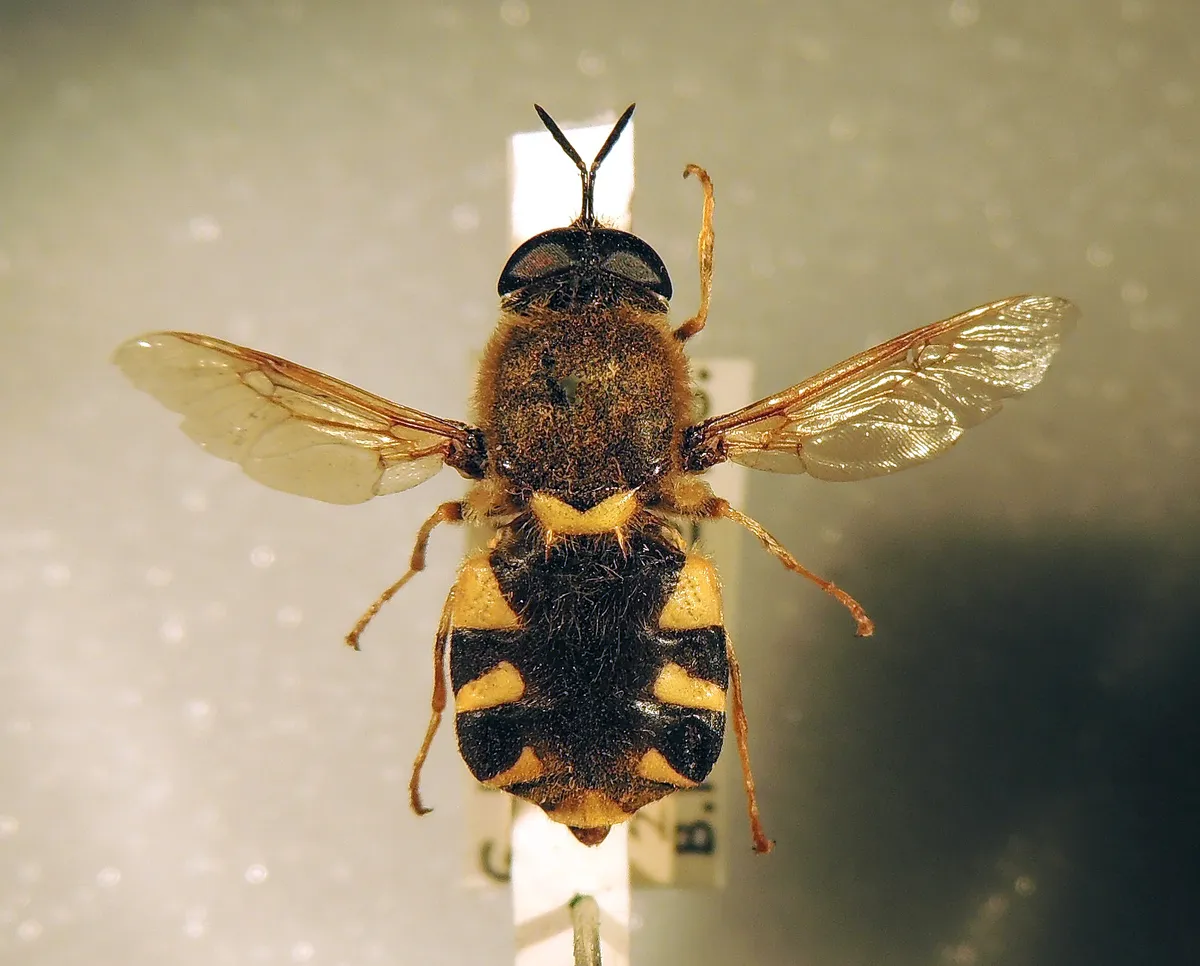
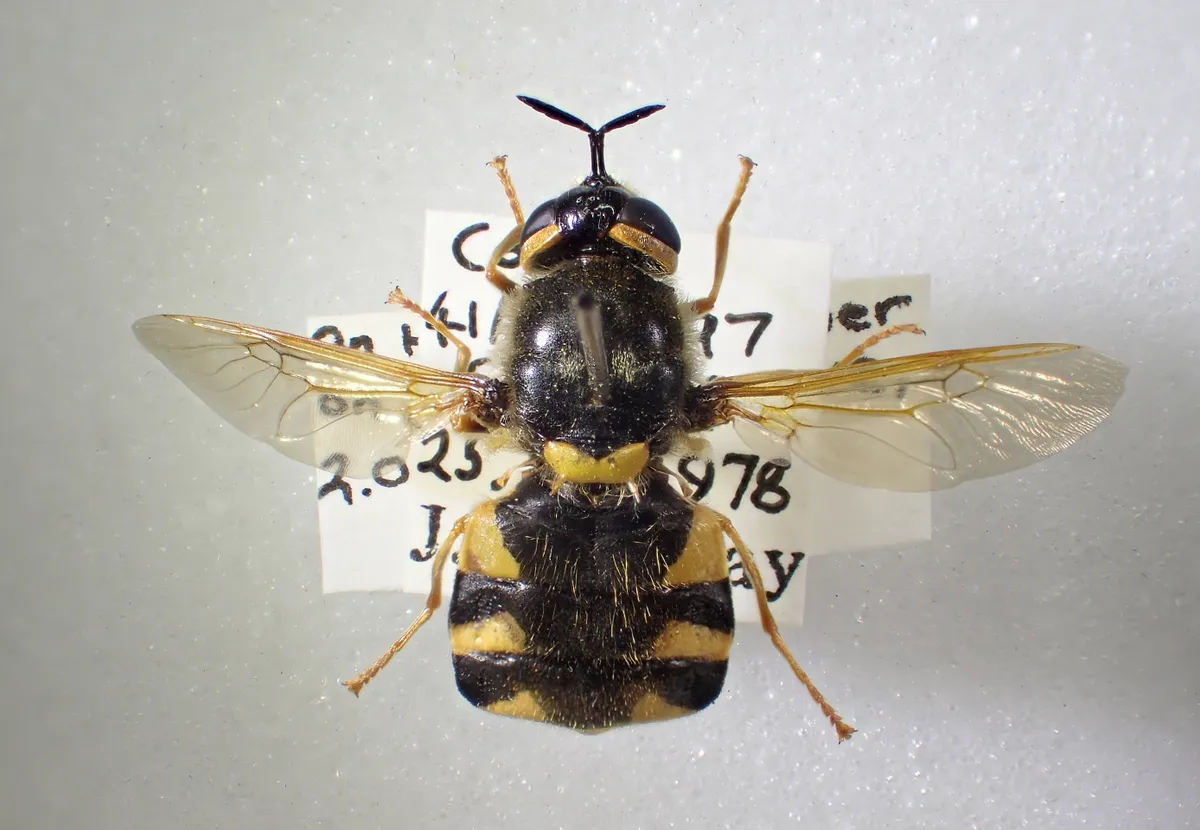
Banded general, Stratiomys potamida
- ID notes: Tergite 3 with slender yellow markings tapered or joined in middle
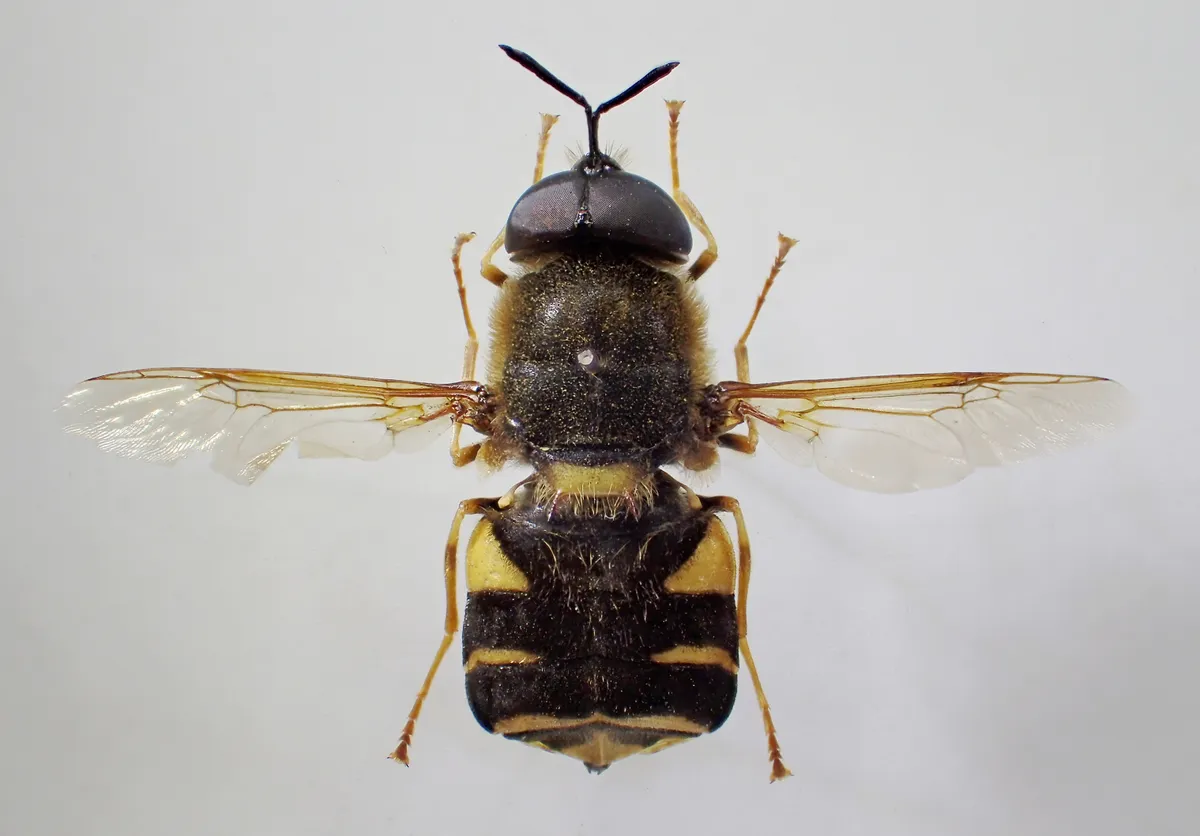
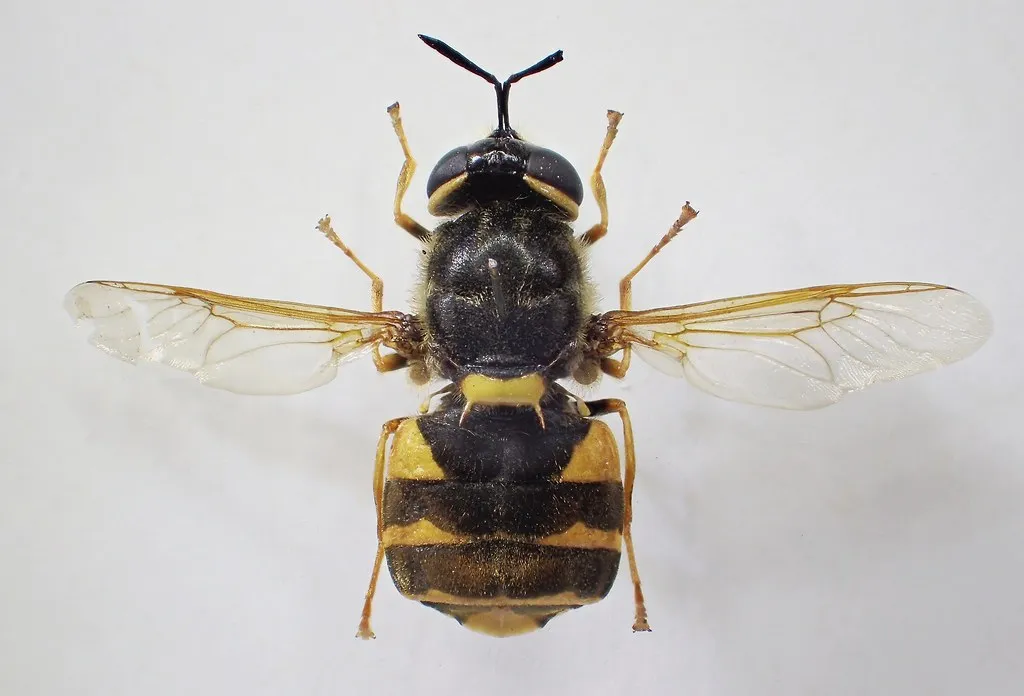
Flecked general, Stratiomys singularior
- ID notes: Short paired similar white or yellow markings on targets 3 and 4.
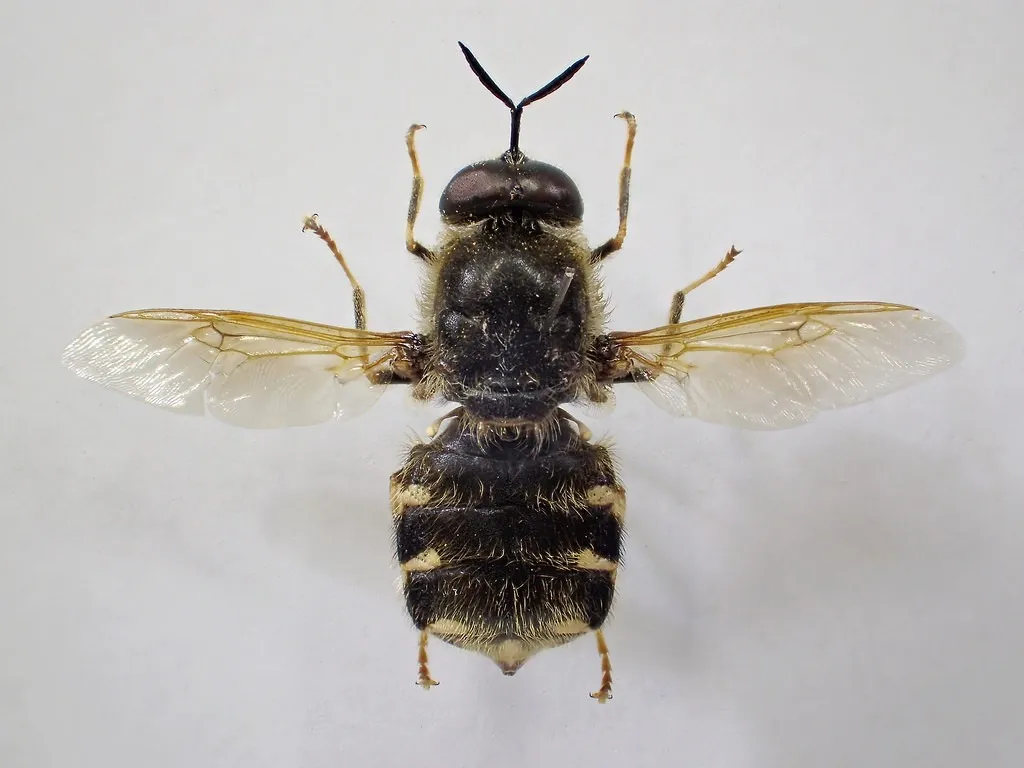
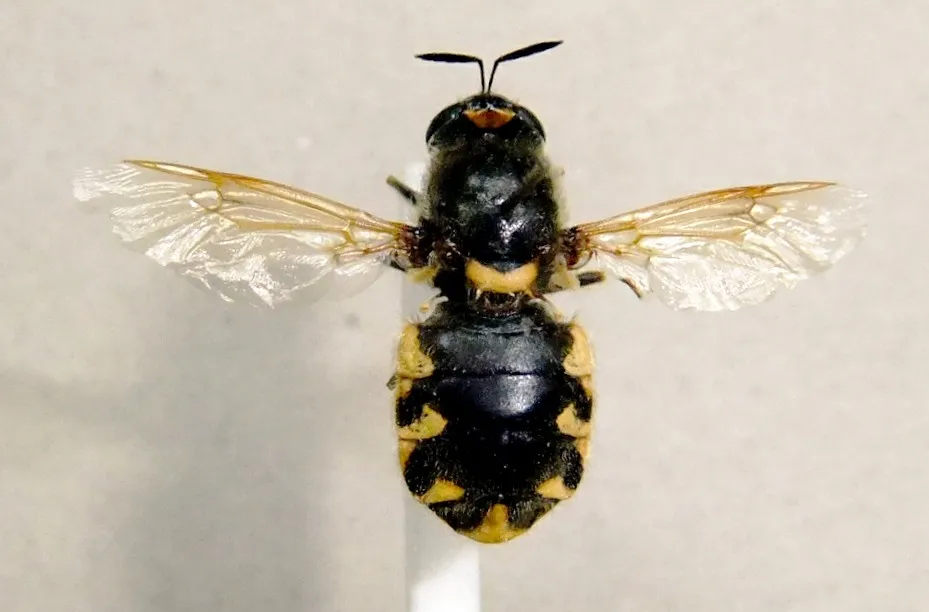
Long-horned general, Stratiomys longicorns
- ID notes: Tergites without or with very reduced markings. Thorax with quite dense brown hair.
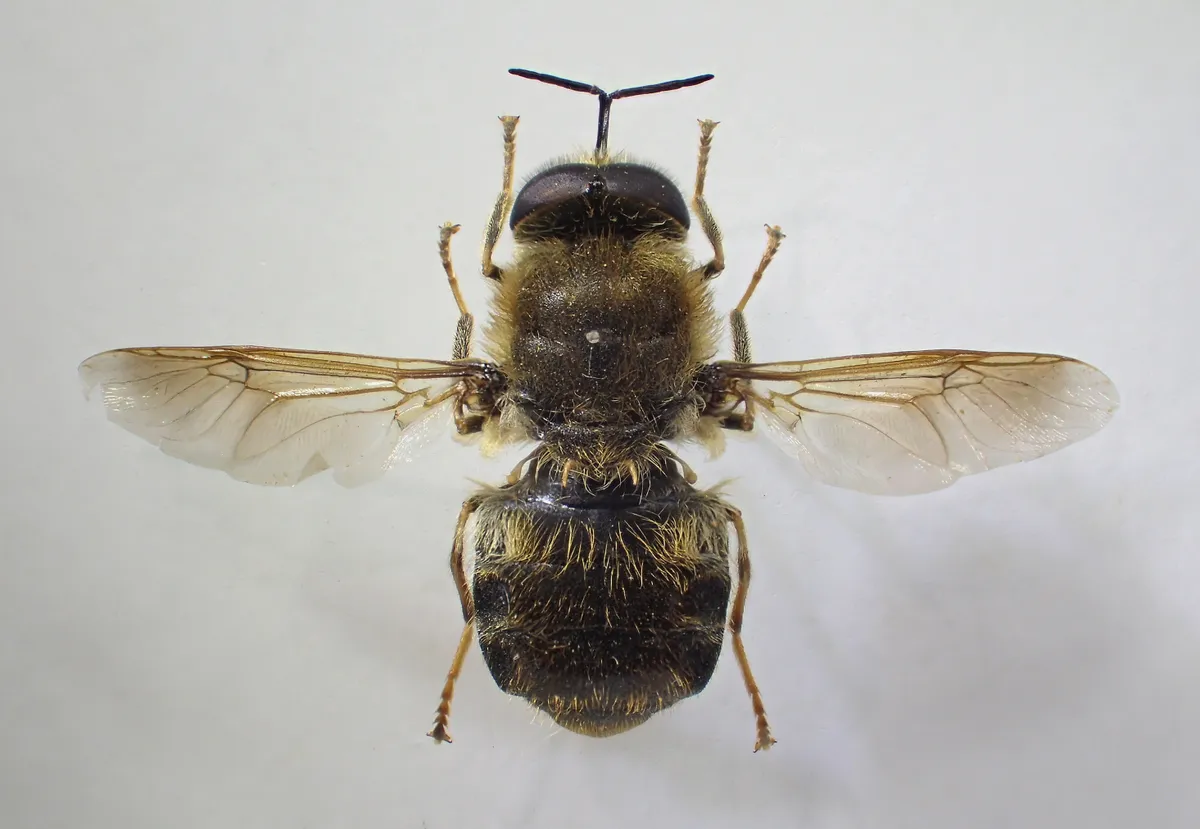
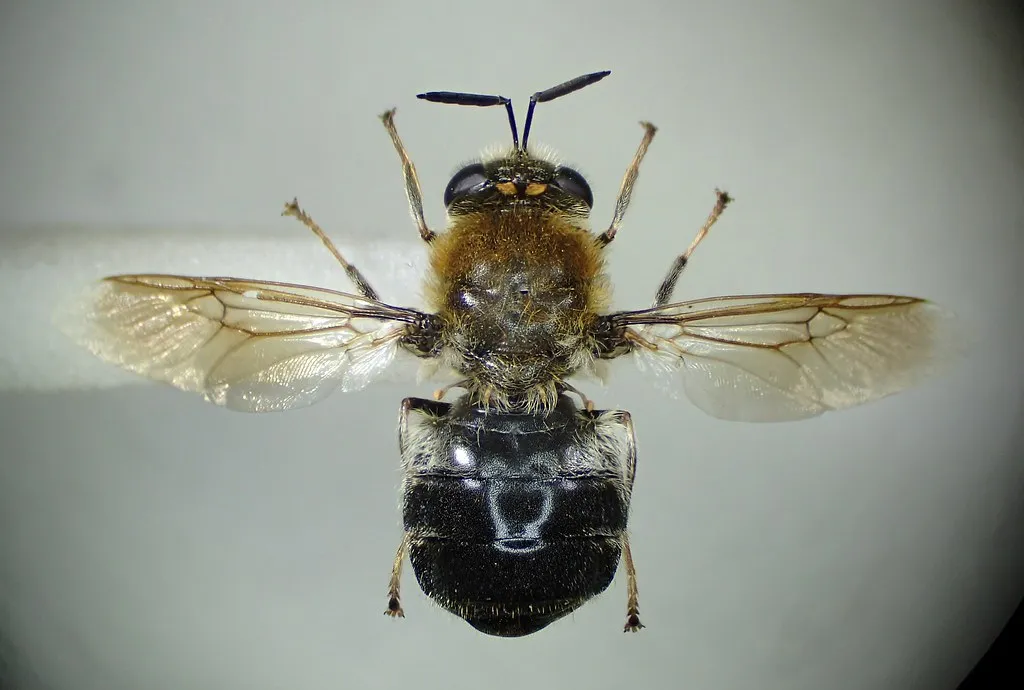
These species are all very conspicuous quite large flies 10 - 15 mm long (about the size of a small bumblebee). None of them are common and S. chamaeleon is very rare. If you come across any of them you should recognise the genus and if you can get a photograph with a bit of luck you will be able to have a go at identifying the species from comparison with the pictures above.
If you have already or get a copy of the book British Soldierflies and Their Allies you will find more characters which you can use to confirm your identification. Whatever you think it is, I recommend that you report it with your picture(s) to the British Soldierflies and Allies Recording scheme through their Facebook page or by direct email to the scheme organiser.
I have to thank several of my fellow Dipterists for giving me permission to use photographs from their portfolios in preparing this post. They are: Steven Falk, Ian Andrews, Judy Webb, and Darwyn Sumner.

Dr Malcolm Smart was first encouraged to take an interest in wildlife and particularly insects as a 10 year old by his primary school teacher. His particular interest in Diptera was fuelled at theage of about 14 by the discovery of a specimen of Volucella zonaria (Britain's largest fly and a hornet mimic) inside the kitchen window of his parents' home in Ealing. He caught it and took it to the (London) Natural History Museum Where he met Ralph Coe and Harold Oldroyd (Predecessors of Dr Erica McAlister) who, together with Len Parmenter (a very respected amateur Dipterist of the time), became his mentors.
He developed a particular interest in Syrphidae and the group of families now known as Soldierflies and Their Allies, especially the Asilidae. After a break of 6 years at University he rekindled his interest in Diptera spent 27 years working as an engineer in various countries around the world and studying the local Diptera whenever possible before returning to the UK. He is now retired and once more an amateur dipterist. He is a Fellow of the Royal Entomological Society and a committee member of Dipterists Forum of which he is a past chairman.
Main image: A male Stratiomys chameleon. © Peter Andrews
